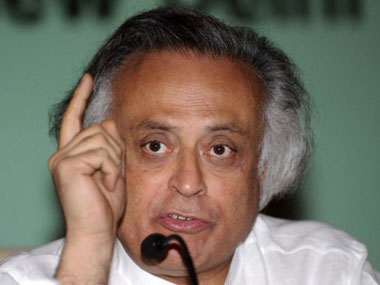By Meenal Dubey
Environment Minister Jairam Ramesh’s mea culpa on bending the rules for clearing certain mega-projects has been well reported. Less talked about has been his ministry’s assembly-line approach to clearances by the Standing Committee of the National Board of Wildlife (NBWL), a statutory body for assessing the impact of projects in wildlife habitats.
At a recent meeting of the NBWL on 25 April, the energetic ministry got as many as 40 projects cleared in as little as three hours. The rush has left some members of the board gasping and fuming, since most of them got just 24-72 hours to study project proposals running into hundreds of pages.
“The additional agenda items were handed to members on the night of Friday, 22 April, giving us not even a single working day before the meeting, with no time to review and assess the items for an informed decision-making process,” said NBWL member Koustubh Sharma of Nature Conservation Foundation, Mysore.
[caption id=“attachment_11414” align=“alignleft” width=“380” caption=“Given that the board has 39 members, the only way 40 projects could have been cleared in three hours was by not discussing anything of much importance. Raveendran/ AFP”]
 [/caption]
[/caption]
Too much information given in too little time means almost nobody could apply his or her mind to any issue. Given that the board has 39 members, the only way 40 projects could have been cleared in three hours was by not discussing anything of much importance.
The NBWL is chaired by Ramesh and its members include serving officials of the environment ministry and members of civil society, including various NGOs. The meeting is held at the capital’s Paryavaran Bhawan. The main purpose of this board is to give expert opinion on the impact on wildlife caused by projects proposed inside India’s national parks and wildlife sanctuaries and within a 10-km radius. The board’s opinions are binding on the government.
At the latest meeting of the board held on 25 April, a number of members protested against the flimsy manner in whichthe agenda was pushed through. The environment ministry’s notification issued last year on constituting the Standing Committee of the board states that “The member-secretary shall prepare agenda items for the meetings, obtain approval of the chairperson and circulate it to all members at least 15 days prior to the date of such meeting.”
Says Sharma of Nature Conservation Foundation: “There was very little time allotted for the meeting with the agenda that it had. As a result, items on conservation suggested by the members were not discussed. This has frequently occurred in the past. In view of the very infrequent meetings of the full NBWL, the Standing Committee is the only forum where conservation issues can be raised by the members and if even this opportunity is denied, then the Standing Committee would only be a project clearance committee and nothing more.”
Another membe, Divyabhanusinh Chavda,said: “The hard copy with the maps was delivered to my house on Sunday, 24 April, at Jaipur when I had already left for Delhi. The additional items in the agenda were presented at the meeting itself. Consequently, I was unable to fully prepare for the meeting as I would have liked to do.”
The upshot: many of the board’s decisions might have been erroneous, especially in projects that could harm wildlife. This is echoed in the minutes of the meeting, “The decision-making process of the NBWL is hampered by the fact that maps, FAC (Forest Advisory Committee) clearances, and Environment Impact Assessment reports for all agenda items usually reach the members a day or so before the meeting, a fact repeatedly pointed out by the members. It is important that members should be able to assess the proposals and the likely impacts they will have on protected areas and wildlife.”
Case study in haste
At the 25 April meeting of the National Board of Wildlife, permission was given for setting up the 330-megawatt Dholpur gas-based combined cycle thermal power project (stage II) for drawing water from the National Chambal Ghariyal Sanctuary at Dholpur, Rajasthan.
The member-secretary told the board that the study report on the water intake requirements of different projects from the Chambal river had been received from the Director, Wildlife Institute of India, and circulated amongst the members. The report had recommended that no new projects could be allowed to take water from Chambal as the present flow was inadequate and declining at the rate of 3 percent every year. After discussions, the committee accepted the study report and decided to recommend the proposal subject to the condition that no new projects on the Chambal would be considered by the committee in future. Incidentally, this river is home to the endangered Ghariyal species and the Gangetic dolphin.
)